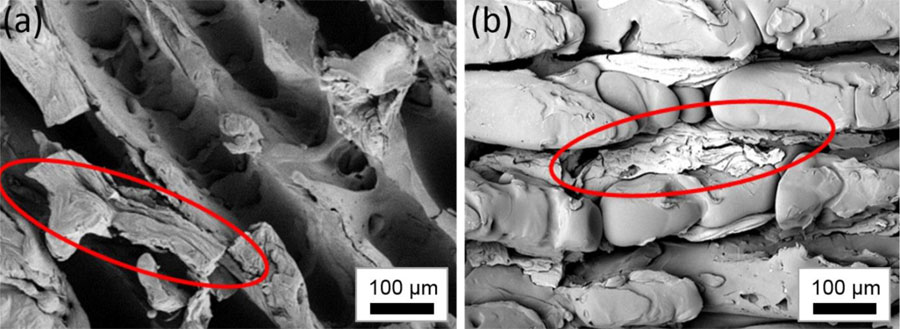Continuous infrared laser approach pretreats aluminum sheets to better adhere to thermoplastic polyamide in injection molding applications, paving the way for stronger lightweight materials.
From the Journal: Journal of Laser Applications
WASHINGTON, D.C., August 28, 2018 — As developers in the automotive and airline industries push to make more efficient vehicles, they are turning their attention to designing sturdy, lightweight machines. Designing lightweight materials, however, requires carefully joining together different types of materials like metals and polymers, and these additional steps drive up manufacturing costs. New work in laser technology recently increased the adhesion strength of metal-plastic hybrid materials.
A group of German engineers recently demonstrated a technique for binding plastic to aluminum by pretreating sheets of aluminum with infrared lasers. In the Journal of Laser Applications, from AIP Publishing and the Laser Institute of America, the researchers found that roughening the surface of aluminum with continuous laser beams created a mechanical interlocking with thermoplastic polyamide and led to significantly strong adhesion.
“In other joining methods you have a plastic part you want to fit together with a metal part. In the injection molding process we generate a plastic part on top of the metal part in a cavity of the machine,” said Jana Gebauer, an author on the paper. “As a consequence, it is very difficult compared to thermal pressing or other joining technologies because of the specific thermal conditions.”
To tackle these issues, Gebauer and her colleagues used both a continuous laser and one pulsed for 20 picoseconds at a time to make the surface of aluminum sheets more adhesive for a polyamide layer to be molded over it. They then placed the sheets in an injection mold and overmolded them with thermoplastic polyamide, a polymer related to nylon that is used in mechanical parts like power tool casings, machine screws, and gears.
“Following that, we analyzed the surface topography and conducted mechanical tests of the bonding behavior to find out which parameters led to maximum bonding strength,” Gebauer said.

Tests using optical 3D confocal microscopy and scanning electron microscopy revealed that the aluminum sheets treated with pulsed lasers enjoyed much smoother line patterns in the trenches on their surfaces than those pretreated with continuous laser radiation. Aluminum sheets treated with infrared lasers also exhibited stronger bonding, but these properties diminished in tests with increasing levels of moisture.
Despite the team’s success, Gebauer said that much work lies ahead to understand how pretreatments of the metal’s surface can be optimized to make the process more economical for manufacturers. Now, she and her colleagues look to take on studying how molded thermoplastics shrink when cooled.
“The thermal contraction leads to mechanical stresses and can separate both parts. The current challenge is to generate a structure that compensates for the stresses during shrinkage without softening the aluminum by the laser treatment,” Gebauer said. “Now we want to produce a reliable bonding under usage of ultrashort pulsed laser to reduce thermal damage in the metal component.”
The Fraunhofer Institute for Material and Beam Technology, Leibnitz Institute for Polymer Research, Technical University Dresden were involved in producing the findings in this paper.
###
For More Information:
Rhys Leahy
media@aip.org
301-209-3090
@AIPPhysicsNews
Article Title
Laser structured surfaces for metal-plastic hybrid joined by injection molding
Authors
Jana Gebauer, Matthieu Fischer, Andres F. Lasagni, Ines Kuhnert and Annet Klotzbach
Author Affiliations
Fraunhofer Institut für Werkstoff- und Strahltechnik IWS, Leibniz-Institut für Polymerforschung Dresden e.V., Technische Universität Dresden
